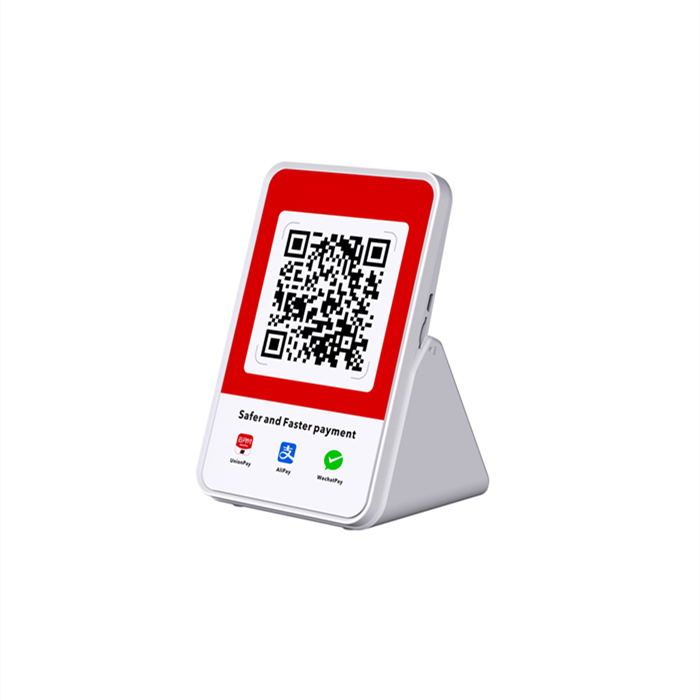How Android POS Outperforms Traditional POS Systems in 2025
Android POS vs. Traditional POS: Core Differences in 2025
Hardware Flexibility: From Fixed Terminals to Mobile Solutions
Android POS systems are renowned for their hardware flexibility, offering businesses the choice to operate using tablets, smartphones, or conventional POS terminals. This versatility allows for the integration of mobile solutions that enhance convenience and accessibility in dynamic retail settings. Traditional POS systems, conversely, rely predominantly on fixed terminals, which restrict mobility and can be cumbersome in environments requiring quick movement and adaptability. Surveys conducted in 2025 indicate that nearly 65% of retailers now favor mobile POS solutions due to their ease of use and adaptability, which significantly improves operational effectiveness.
Software Ecosystem: Open-Source vs. Proprietary Systems
The software ecosystem of Android POS systems is another crucial differentiator, primarily due to its open-source nature, allowing for extensive customization and seamless integration with various applications. This adaptability results in a flexible system that accommodates diverse business needs without the added financial burden of licensing fees typical of traditional POS systems. Traditional POS systems often operate on proprietary software, which can be rigid and require hefty licensing costs. According to industry analysis, utilizing open-source solutions can lead to a 30% increase in ROI for businesses, attributed to reduced software costs and enhanced customization capabilities. These savings enable businesses to allocate resources to other critical areas, fostering growth and innovation.
Key Advantages Driving Android POS Dominance
Seamless Omnichannel Integration
Android POS systems stand out for their ability to provide seamless omnichannel integration. This allows retailers to effectively manage sales across various platforms, including in-store, online, and mobile settings. Such integration enhances the customer experience by removing barriers between different purchasing channels and ensuring consistent pricing and promotions. Notably, recent market studies reveal that over 75% of consumers favor retailers that deliver a unified shopping experience across channels, suggesting that Android POS systems offer a strategic advantage in meeting consumer expectations.
Real-Time Inventory and Sales Analytics
The capability of Android POS systems to offer real-time inventory management and sales analytics is a game-changer for businesses. These systems provide immediate insights into stock levels and sales performance, reducing the likelihood of stockouts or overstock scenarios that can impact customer satisfaction and operational efficiency. Enhanced operational productivity is a notable outcome, with research indicating a 20% increase in this area for businesses that implement real-time analytics. This makes Android POS systems a crucial tool for improving both customer satisfaction and the efficiency of business operations.
NFC and Digital Wallet Compatibility
Android POS systems support NFC technology, facilitating quick and contactless payment methods that align with the evolving preferences of consumers. This compatibility also extends to digital wallets such as Apple Pay and Google Pay, thereby offering customers a broad range of convenient payment options. Data shows that the adoption of contactless payments has surged, with transactions increasing by over 30% year over year. This underscores the critical need for retailers to embrace technologies that support digital wallets and contactless payments, positioning Android POS systems as a forward-thinking solution.
Cost Efficiency and Scalability for Modern Businesses
Lower Upfront and Maintenance Costs
Android POS systems offer notable cost advantages, primarily due to their lower upfront investment compared to traditional POS solutions. Their hardware flexibility allows businesses to use a wide range of devices, making it easier to find budget-friendly options that fit specific needs. Moreover, maintenance costs are significantly reduced, as cloud-based solutions often eliminate the need for on-site technical support. Studies have shown that businesses can save up to 40% on initial costs when opting for Android POS systems over traditional setups. This financial efficiency enables retailers to allocate more resources toward growth and innovation rather than initial system investment.
Cloud-Based Updates and Remote Management
One of the standout features of Android POS systems is their support for cloud-based updates and management. This capability allows businesses to receive software improvements instantly, keeping their systems up-to-date without the need for physical intervention. Additionally, remote management means that troubleshooting and system enhancements can be conducted from any location, reducing the need for costly in-person IT support. According to reports from tech analysts, companies utilizing cloud-based management experience a 25% reduction in IT-related downtime, which translates to smoother operations and enhanced productivity. The ease of remote operations ensures that businesses maintain an edge by quickly adapting to new challenges and opportunities.
2025 Innovations: How Android POS is Evolving
AI-Powered Customer Insights
The integration of Artificial Intelligence (AI) in Android POS systems is revolutionizing the way businesses understand customer behavior. These systems provide in-depth analytics regarding purchasing patterns and trends, enabling businesses to tailor marketing strategies for enhanced customer engagement. For instance, by analyzing data trends, businesses can offer personalized recommendations, thus boosting sales. Experts predict that businesses leveraging AI-driven analytics can witness up to a 20% increase in revenue within the first year of implementation. This demonstrates the potential of AI in driving competitive advantage in customer-centric industries.
Biometric Authentication and Enhanced Security
Biometric authentication in Android POS systems is enhancing security measures, significantly mitigating fraud risks. By using technologies such as fingerprint recognition and facial scanning, these systems ensure that transactions are conducted securely, thereby building consumer trust. In today’s digital era, where data breaches are a prevalent concern, secure payment systems with biometric features are essential. According to cybersecurity experts, implementing biometric solutions can reduce fraud by as much as 50%, underlining the necessity for robust security protocols. This increased security not only protects businesses but also reassures customers of safe transactions.
Future-Proofing Retail with Android POS Adoption
Adapting to Hybrid Payment Trends
Adopting Android POS systems enables retailers to keep up with evolving consumer preferences by integrating hybrid payment methods. This flexibility is essential as the shift towards digital payments accelerates, allowing retailers to seamlessly accept various payment forms, from traditional credit and debit cards to mobile wallets and contactless payments. By accommodating these diverse preferences, businesses can enhance customer satisfaction and forge a competitive edge in today's digital marketplace. Industry forecasts underscore the importance of this adaptability, predicting that hybrid payment methods will constitute over 60% of transactions by 2025. As such, retailers who embrace these systems will be better positioned to meet evolving consumer demands and maintain their market presence.
Kiosk Mode for Streamlined Operations
The adoption of kiosk mode in Android POS systems offers retailers the opportunity to streamline operations by facilitating self-checkout and providing instant access to product information. This functionality not only minimizes wait times for customers but also allows staff to shift their focus to more value-added services, such as personalized customer assistance and in-store sales support. By implementing self-service kiosks, businesses have experienced marked improvements in efficiency, with research indicating queue times can be reduced by up to 30%. The result is a more efficient, customer-centric shopping experience that increases satisfaction and loyalty while optimizing the overall operational workflow within the retail environment.
Recommended Products
Hot News
-
Smart Card 2019
2024-01-23
-
Trustech 2019
2024-01-12
-
Futurecom 2019
2024-01-12
-
Seamless Payments Asia 2020
2024-01-12
-
Seamless Middle East 2022
2024-01-12

 EN
EN
 AR
AR
 BG
BG
 CS
CS
 DA
DA
 NL
NL
 FR
FR
 IT
IT
 JA
JA
 KO
KO
 PL
PL
 PT
PT
 RU
RU
 ES
ES
 TL
TL
 ID
ID
 LT
LT
 UK
UK
 VI
VI
 HU
HU
 MT
MT
 TH
TH
 TR
TR
 FA
FA
 AF
AF
 MS
MS
 MK
MK
 HY
HY
 AZ
AZ
 KA
KA
 BN
BN
 BS
BS
 LO
LO
 MN
MN
 NE
NE
 ZU
ZU
 MY
MY
 KK
KK
 UZ
UZ
 KY
KY











